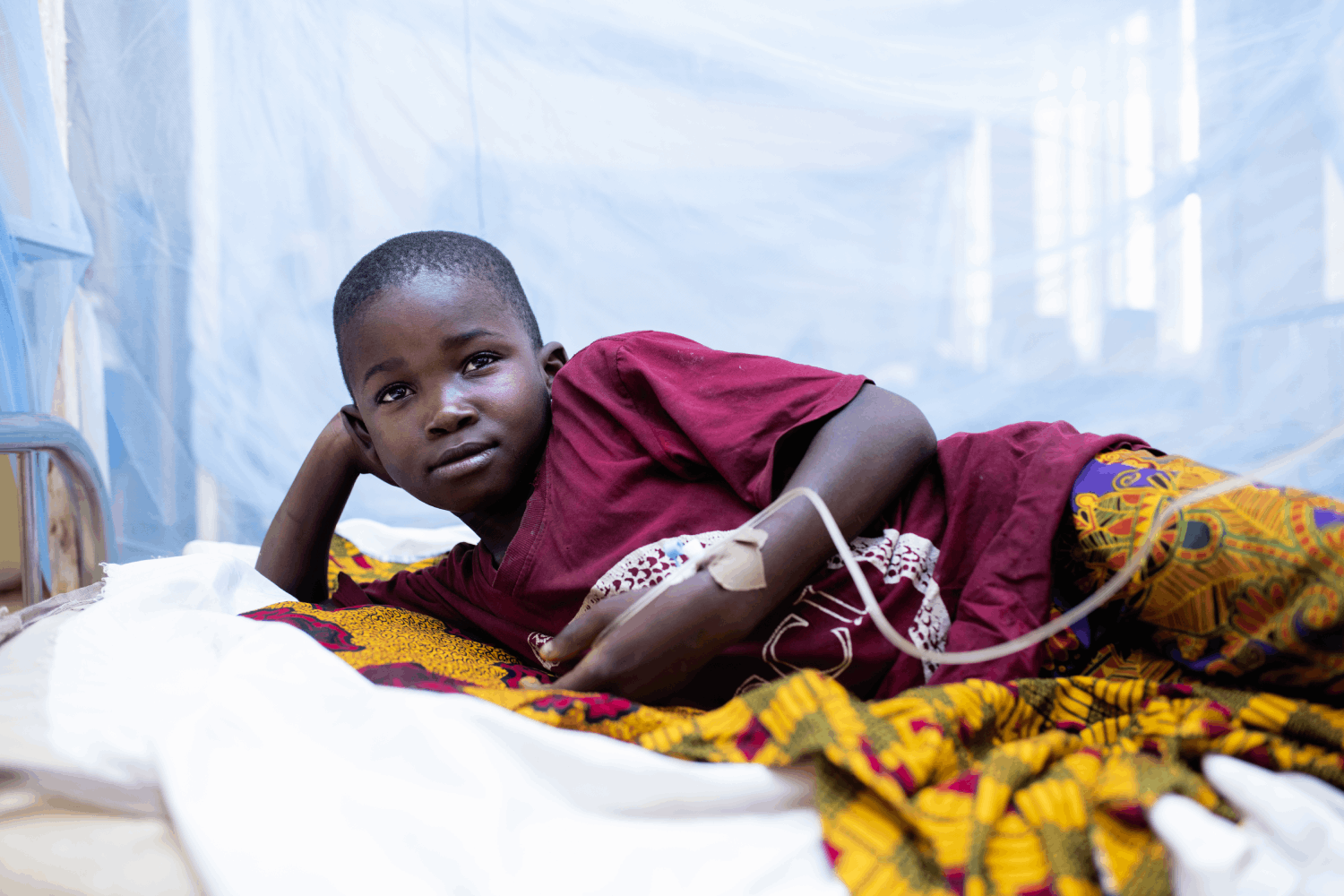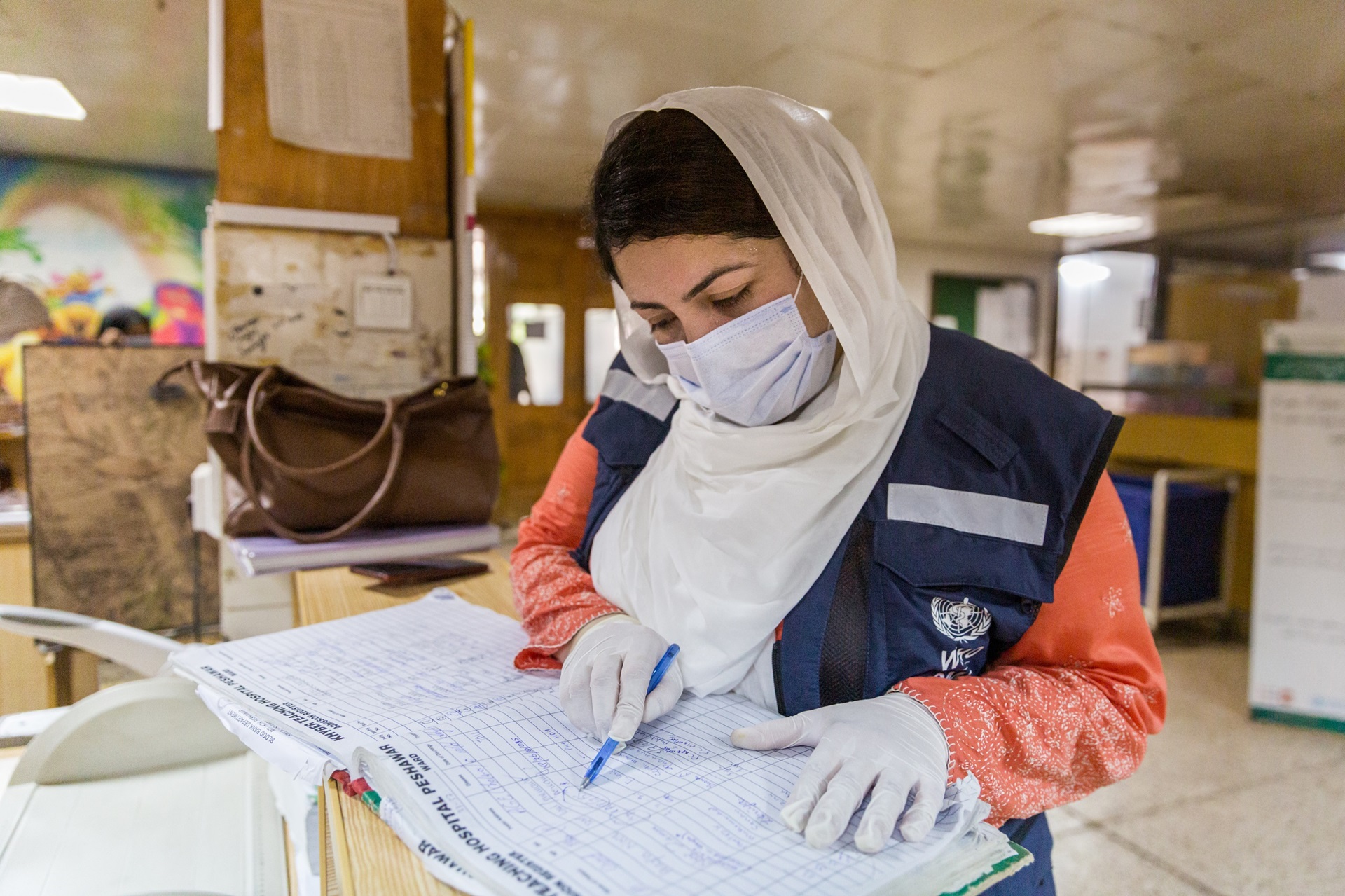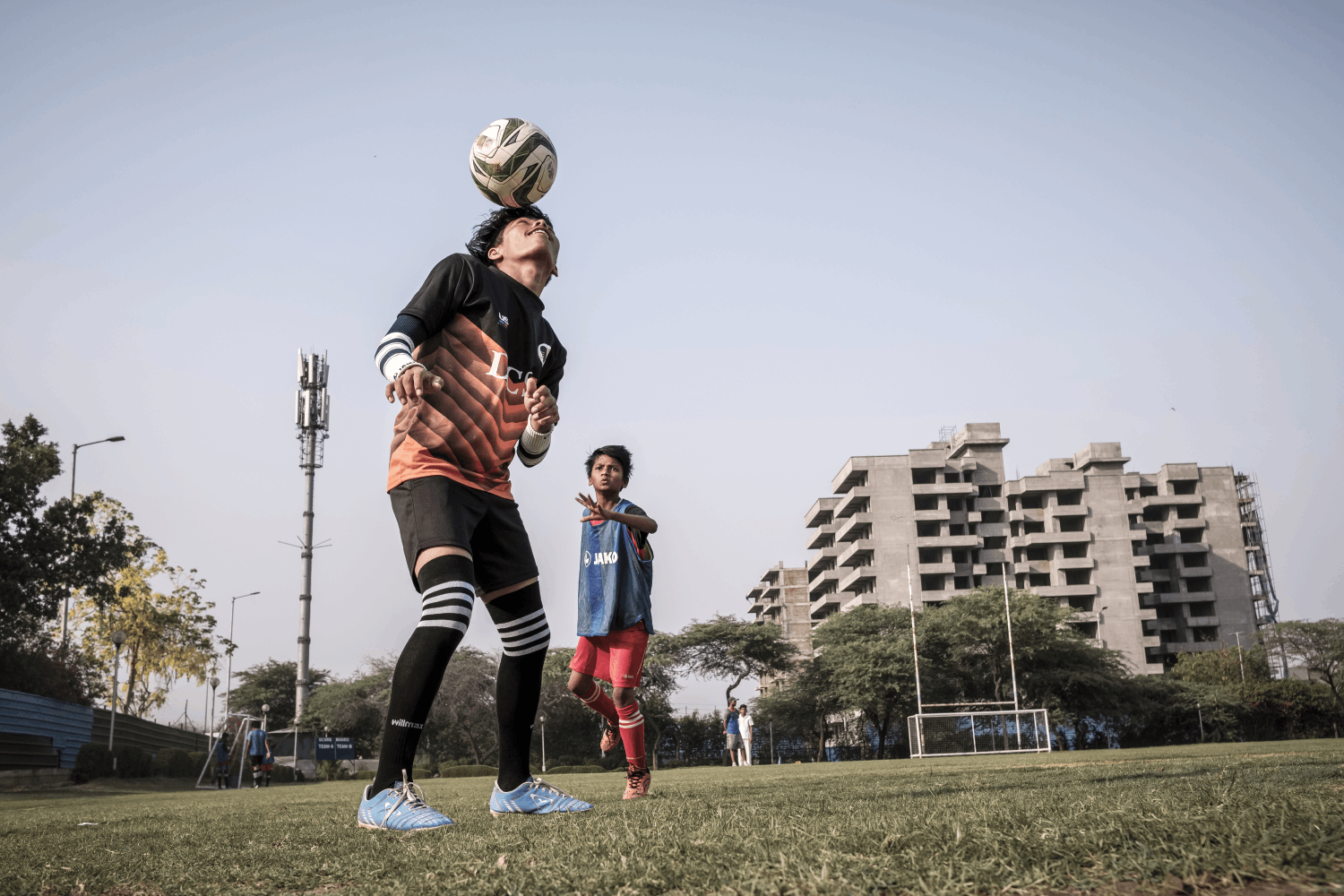PROGRESS TOWARDS
the triple billions targets
Accelerating progress towards Sustainable Development Goals (SDGs) and the triple billion targets
The COVID-19 pandemic has highlighted the critical role of health in the well-being of society and has demonstrated unequivocally the importance of the triple billion ambition of the WHO Thirteenth General Programme of Work 2019–2023 (GPW 13). Progress towards the triple billion targets and the Sustainable Development Goals (SDGs) can be achieved only when baselines are defined clearly, targets are set and trajectories for acceleration are identified to guide and drive actions.
WHO is working with countries to assess the impact of COVID-19 on delivery and to assess and quantify the toll of the pandemic. A central task has been not only to assess and quantify the gap between the current situation and reaching the targets by 2023 but also to help define a path forward for countries to set ambitions and accelerate progress. Scenarios for accelerating progress in achieving the indicators, for charting the rate of progress necessary and to correct the course in order to reach the triple billion targets and the SDGs has been developed.
Assessment and quantification of the shortfall from the targets indicates the level of ambition necessary for countries to deliver. When countries see both their current situation and the target, the acceleration scenarios provide a means for obtaining technical packages, policy recommendations and other WHO resources for closing the gaps by 2023.
The following provides a summary of progress to date in achieving each of the triple billion targets and the actions necessary to accelerate progress and achieve impact. The impact of the COVID-19 pandemic has not yet been included in the projections.

Achieving one billion more people benefiting from universal health coverage
The goal of achieving universal health coverage for one billion more people is assessed as a single measure of the indicators for SDG targets 3.8.1 and 3.8.2, for improvements in both average service coverage and financial protection.
Progress towards this billion is predicted to be the slowest of all three billion targets; achievement of the target has not been on track since the beginning of GPW 13. An estimated 290 million more people are projected to be benefitting from universal health coverage by 2023 than in 2018, leaving a gap of 710 million. The COVID-19 pandemic threatens to further slow progress towards because of severe service disruptions, foregone care and increasing financial hardship.
In a scenario of “business as usual”, it is projected that interventions for infectious diseases, such as access to antiretroviral treatment for people with HIV and insecticide-treated bed nets to prevent malaria, will continue to drive progress in average service coverage; however, other areas in which there is limited improvement, such as effective treatment coverage for hypertension and diabetes and health workforce density, must be addressed to achieve this billion.
Acceleration scenarios have been identified for 10 of the 14 tracer indicators of service coverage, based on ratified global targets such as End TB, the Immunization Agenda 2030 and the Noncommunicable Disease Monitoring Framework. If all countries could implement these scenarios successfully, the gap could be reduced by 30%, reaching an additional 200 million people.
Lower-income and lower- to middle-income countries are expected to make the most progress during the GPW 13 period. However, such progress is not enough to reduce the persistent global inequality in access to services between low- and high-income countries. Therefore, more attention might have to be paid to low-income countries in order to reduce global inequality in access to services.
There should therefore be a dual approach to ensuring a billion more people benefit from universal health coverage: first, identifying strategies to strengthen essential health services, which are the foundation of universal health coverage, and investing in the health workforce to assure the overall capacity and resilience of health systems; and, second, improving access and the quality of care through an integrated health systems strengthening approach, including primary health care and health financing interventions. Multi-sectoral community-centred implementation of these broader interventions could reach untapped potential for acceleration in achieving the indicators and addressing inequalities.
To ensure equitable, resilient recovery from the COVID-19 pandemic, investment in high-quality primary health care will be critical to advancing progress towards universal health coverage. Provision of the core infrastructure and essential health services that are the basis of primary health care could also affect systems and individual indicators of achievement of the triple billion targets and the SDGs and ultimately provide a secure foundation for Member States to meet their population health needs.

Achieving one billion more people better protected from health emergencies
Before the onset of COVID-19, the world was estimated to be on track in ensuring that one billion more people are better protected from health emergencies by 2023, with positive trends in all three major indicators –prepare, prevent and detect and respond. Although the full impact of COVID-19 is yet to be determined, estimates in April 2021 that include data for 2020 suggest that the current trajectory will result in 920 million people better protected from health emergencies by 2023. This projection is just short of the billion target and represents a marked increase from the 2018 baseline. Estimated contributions to the increase vary by region, mainly because of substantial differences in the baseline values for each indicator. Investments in the response to COVID-19 and particularly to preparedness, disease surveillance and vaccination may be leveraged to accelerate progress towards the target. Further monitoring and analysis are required to determine the longer-term consequences of COVID-19 for attainment of the billion target.
For the “prepare” indicator, the 2020 report on States Parties self-assessment shows that most countries have improved their core capacities to comply with the International Health Regulations (2005) (IHR) since 2018, and two thirds are on track to deliver their share of the billion goal for protection from health emergencies. COVID-19 has shown, however, that the world as a whole was unprepared for a pandemic on this scale and that high scores for preparedness assessed with current tools did not necessarily mean that a country could mount an effective response to COVID-19.In addition to core preparedness capacities, countries that demonstrated strong national performance during COVID-19 had several key factors in common: recent past health system experience with handling major outbreaks; actively managed National Action Plans for Health Security; public trust, strong leadership and evidence-based policies; the presence of strong disease-specific programmes such as the implementation of the Pandemic Influenza Preparedness Framework.
Expanding the way in which we dynamically and collectively assess national all-hazards emergency preparedness to include readiness, governance, health systems and community resilience will therefore be essential to protect one billion people from health emergencies. These elements should be addressed in the healthier populations billion and the proposed “universal health and preparedness review” to collectively strengthen health emergency preparedness. The lessons learnt will help to ensure that support for countries to improve their preparedness and readiness includes these elements, so that they can respond more effectively and protect more lives in future health emergencies.
The “prevent” indicator, which quantifies the effectiveness of infectious disease control strategies, comprises vaccination coverage for five priority diseases (yellow fever, meningitis, cholera, measles and polio). Delays in some immunization programmes and diversion of some resources due to the COVID-19 response may result in decreased vaccination coverage for some diseases as compared with previous years. Additionally, the pandemic occurred against a complex backdrop of uneven vaccination rates, which fell globally from 87% to 86% between 2015 and 2018 before recovering to an estimated 88% in 2020. Global trends may mask marked variations within regions and between countries, and the distribution of immunization coverage should be analysed at a more granular level to ensure that equity is prioritized, especially in fragile, conflict-affected and vulnerable settings. Timely, high-quality systems for reporting data are essential for identifying gaps in coverage, and disaggregated data can help to ensure that most at-risk and vulnerable people are reached. This will become clearer with increased attention to and investments in the global roll-out of COVID-19 vaccination, which presents opportunities to advocate for equity and accelerate routine and emergency vaccination. Immunization programmes could be further improved by increasing a shift to an integrated, platform-based approach to scale up the control of vaccine-preventable diseases, including those with pandemic potential.
The timeliness of the world’s response to health emergencies is measured by the “detect and respond” indicator, introduced by the GPW 13. The COVID-19 pandemic laid bare the strengths and weaknesses of current global mechanisms for coordinating monitoring, notification and response among Member States. The critical importance of early detection, rapid risk assessment and clear communication became immediately apparent in January 2020. The IHR review committee’s interim findings indicate clear problems in information-sharing between Member States and WHO, and also in disease surveillance and diagnostic laboratory capacity, which are under-resourced in most regions. The latest data indicate that the timeliness of reporting has improved with COVID-19, which probably reflects heightened global awareness of this emerging disease. There is nevertheless room for improvement in both the delivery and measurement of this indicator. Future improvements to the method for assessing the detect and respond indicator may include extending the range of public health events reported and strengthening formal reporting mechanisms by Member States. These would enhance understanding of the speed of detection and response, trends and bottlenecks. Ultimately, an enhanced detect and respond indicator will guide and inform the actions necessary for more rapid detection and effective response to health emergencies.

Achieving one billion more people living with better health and well-being
The GPW 13 includes a single measure for the behavioural, environmental and social determinants of health, comprising indicators for 17 SDGs and World Health Assembly resolutions. The contribution towards achieving one billion more healthy people is based on the net change during the GPW 13 period of positive and negative trends in the indicators.
Initial estimates based on recent trends show that approximately 900 million more people are projected to be healthier in 2023 than at the baseline in 2018, falling short of the billion target by 100 million. Most (80%) of this progress is anticipated to be driven by only a few countries and results from improvements in water, sanitation and hygiene (WASH) and indoor and outdoor air quality. If the current trend continues, there is a risk that inequality will be increased, such that for every person projected to be healthier in a low-income country, there will be five newly healthier people in the rest of the world (on a population-weighted basis).
All countries could contribute to achieving this target. High-income countries are projected to contribute only 3% to achieving one billion healthier population, yet they make up 15% of the world’s population. An important factor is the steady rise in obesity, which offsets improvements in other sectors.
Countries are anticipated to prioritize different indictors according to their needs and contexts. Specific acceleration scenarios can help identify targets for policy interventions, and strengthened data collection and health information systems are needed, especially in areas such as WASH, violence against women and children and child development, for which lack of data limits monitoring of progress.
Focus on the indicators for areas that are furthest behind for the SDG targets, such as WASH, indoor and outdoor air quality and tobacco use, will be critical to accelerating progress towards the healthier populations target. Ensuring that world-wide negative trends in obesity can be halted or reversed is also a priority.
To address the areas with the greatest shortfalls and negative trends, multi-sectoral partnerships and interventions will be required. Evidence-based, coordinated actions among sectors will be critical for driving change and increasing the number of healthier lives. The COVID-19 pandemic has shown that multisectoral action and collaboration are critical for effective response and recovery and an impact on population health outcomes.
A stronger WHO: more efficient, more effective, better able to support countries
The COVID-19 pandemic requires strong global health leadership. At every twist and turn of the evolution of the pandemic, there has been demand for a strong WHO – for a leading health authority that bases its advice on evidence, data, results and impact.
The pandemic placed many demands on WHO, severely testing it and forcing it to change. WHO responded accordingly and mounted the largest emergency response ever, partly because it was already undergoing transformation.
Implementation of the Transformation Agenda continued in 2020, with a new operating model and new ways of working aligned across the Organization’s three levels, at headquarters and in regional and country offices. The aim of the Agenda is to make WHO more efficient and more effective, with a greater reliance on science, data and innovation – to make improvements by looking inwards, at its administration, and outwards, to leverage partners and the global community in health outcomes.
The pandemic has shown the value of the transformation over the past 3 years, which enhanced WHO’s ability to support a global response. New entities, such as the Science Division and enhanced partnerships and external relations functions, were immediately brought up to scale, validating their importance and capability. Starting with COVID-19, the Science Division established fast-track review to ensure the timeliness, coherence and quality of all WHO guidance by providing approval or critique within 48 hours.
New measurement tools and mechanisms for using data and ensuring WHO’s accountability for results have been introduced, including the system for measuring achievement of the “triple billion”, with a dashboard. The new Department of Digital Health and Innovation and the Global Digital Health Strategy are steering work in this field. Several transformation initiatives enabled the continuity of WHO’s work by a shift to remote working.
A commitment to incorporate transparency and accountability into WHO’s work resulted in a number of new tools, such as the Output Scorecard to ensure value for money and the Partners’ Platform, which brings together governments, donors and partners in a digital space, in which contributions and progress can be viewed by all. The new approach to partnerships also enhanced the COVID-19 response, such as through the Access to COVID-19 Tools (ACT) Accelerator, which includes a wide range of global partners. The resource mobilization campaign for the COVID-19 Strategic Preparedness and Response Plan was the most successful in our history.
WHO is committed to improvement and has thus called for a number of independent reviews on its performance, for impartial, comprehensive evaluation. The world has increased its expectations of WHO during the pandemic and has called for change. The task ahead is formidable and is becoming more complex. Yet, WHO’s budget has not increased to match the scale of the expectations. Predictable, sustainable funding will remain fundamental for WHO’s future work. WHO’s annual budget amounts to what the world spends on just tobacco products every day.
